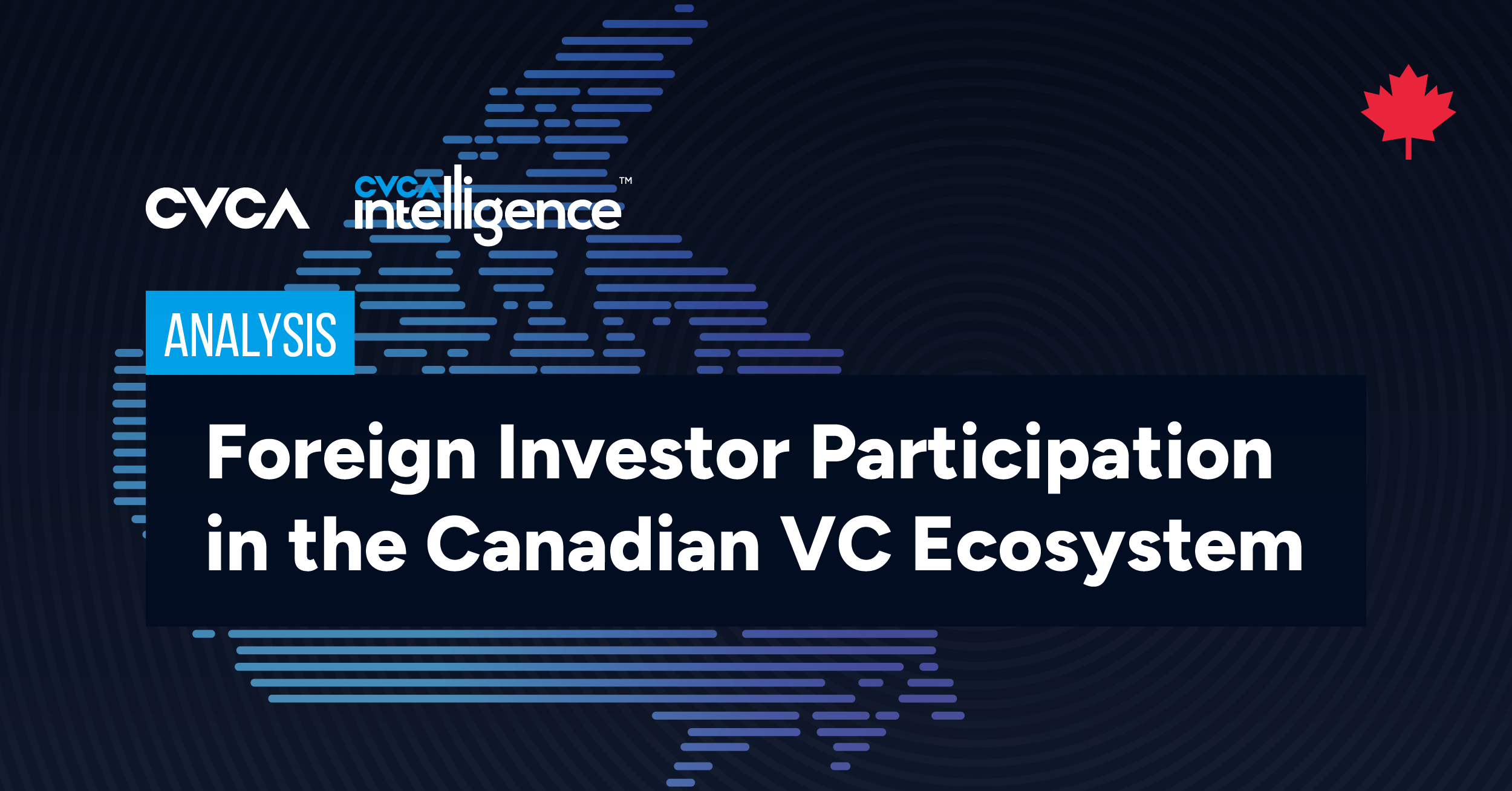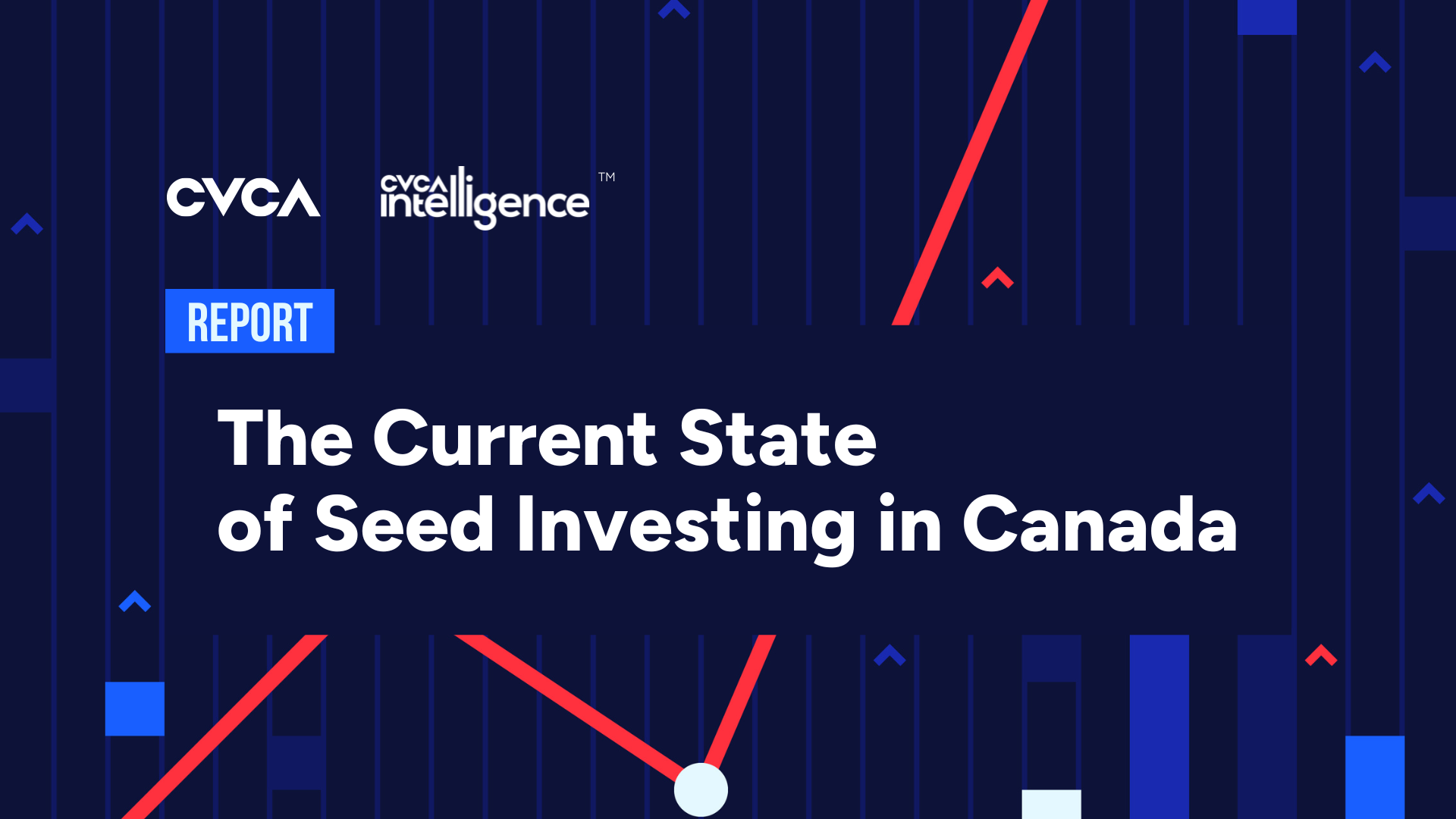The Canadian VC ecosystem attracts investors from all over the world but given our proximity to the U.S. market and their dominance in the VC space, American investors have played an important part in shaping Canada’s startup ecosystem. It’s well understood in the industry that larger financing rounds are more likely to attract U.S. investors. Given the Canada-U.S. dynamics unfolding since the arrival of President Trump, CVCA has taken a closer look at the role of U.S. and international investors in all investment stages and deal sizes, leveraging insights from CVCA Intelligence.
In our quarterly market reports, we dive into investment trends that we see throughout the year – focusing on the portfolio companies and their respective sectors and stages. CVCA’s analysis of venture capital activity revealed notable trends in foreign investor participation across deal sizes and investment stages. After a broader examination, CVCA data demonstrates the rising trend of U.S. investors participating in later stages and larger deal rounds with Canadian participation leading seed rounds and smaller deal sizes.
In this article, we explore four investor categories that show up in the Canadian VC market over the past decade: deals that are funded by Canadian investors only, deals funded by U.S. investors only, deals that are funded by a hybrid syndicate of Canadian and U.S. investors and lastly deals with international investors (non-Canadian and non-American).
Our primary focus will be on the trends we observe across ranges of deal sizes with some insights drawn from an analysis across stages as well.
2024 Analysis by Deal Size
For the analysis across deal size, we grouped data into four buckets and analyzed the participation of each investor category in each of these. The buckets include:
- Deals under $5 million
- Deals between $5-20 million
- Deals between $20-50 million
- Deals above $50 million
Within the first deal size bracket containing deals under $5M, the total 2024 VC investment values in this category were fueled primarily by rounds with only Canadian investor syndicates (70.4%), vs. 16.5% by rounds in which both a Canadian and U.S. investor participated. The remaining investment values can be attributed to U.S. investor-only rounds (6.1%) and international investors (7%).
Moving up to the next deal size bracket, deals between $5M-$20M, rounds with only Canadian investor syndicates begin to drop considerably to 39.9%. Participation rates drop further to 25.0% for deal sizes between $20M-$50M and finally to 12.7% for deals above $50M. However, investor syndicates including both Canadian and U.S. investors begin to climb as the deal sizes increase from 16.5% in deals under $5M, to 39.3% in rounds with deal sizes between $5M-$20M, to 59.9% in rounds with deal sizes between $20M-$50M and to 67.5% in rounds with deal sizes above $50M.
Observing this trend, one can infer that Canadian investors begin to look to external funding sources, primarily investors from the U.S., to fill larger funding rounds.
Looking through a historical lens, we notice a similar trend in the investor category participation across the different deal sizes.
For deals under $5M, Canadian only investor participation fluctuates between 59.2% to 83.7% from 2013 till 2024. The average participation over the past 11 years is 68.3%. This drops to 40.5% average participation in deals between $5M-$20M, 30.8% average participation in deals between $20M-$50M and 13.9% average participation in deals above $50M
On the other hand, when U.S. investors joined Canadian syndicates, participation increases directly as the round size increases with 18.7% average participation in deals less than $5M, 39.5% average participation in deals between $5M-$20M, 47.4% average participation in deals between $20M-$50M and 66.0% average participation in deals above $50M.
2024 Analysis by Stage
Since cheque sizes naturally increase from seed to later-stage rounds, we would then expect similar trends across different investment stages as well.
While not as immediately apparent as by deal sizes, we do observe that Canadian-only rounds begin to drop as we move towards later stages of the VC lifecycle. In 2024, Canadian-only investor participation was 40.0% in seed stage rounds, 20.0% in early stage rounds, 15.9% in later stage rounds and 13.9% in growth stage rounds.
Similarly, the share of rounds with both Canadian and American investors increases as we move towards growth stage VC investments, with 2024 participation at 37.0% in seed stage rounds, 46.6% in early stage rounds, 69.5% in later stage rounds and 83.8% in growth stage rounds.
Observations & Market Perspectives
As deal sizes grow, Canadian-only participation declines, while mixed syndicates of Canadian and U.S. investors take a larger share, particularly in rounds exceeding $20M. Similarly, at the stage level, Canadian-led rounds decrease as companies progress from seed to later stages, with a corresponding rise in U.S. investor involvement.
This analysis underscores the critical role of U.S. investors in scaling Canadian startups, while also highlighting the need for deeper domestic capital pools to support later-stage growth. As the ecosystem matures, ensuring that high-potential Canadian companies have access to competitive funding at every stage will be key to maintaining Canada’s position as a thriving hub for venture investment.
CVCA’s CEO, Kim Furlong, reflects on these trends:
“The data reveals a clear trend in foreign investor participation within the Canadian VC ecosystem. Canadian investors dominate early-stage and smaller deals, while U.S. investors become increasingly involved in later-stage and larger rounds. This pattern has remained consistent over the past decade, reinforcing the idea that Canadian startups often seek external capital to scale beyond early-stage funding. The presence of U.S. investors is also strategic in later stages as Canadian companies have traditionally focused on capturing the U.S. market with the product offerings with hopes that U.S. investors may provide networks and inroads. That said, the level of foreign investor participation in these funding rounds means that when a company exits—whether through M&A or IPO—a significant share of the value and wealth generated leaves Canada. While foreign participation is strategically important, Canada should also aim to play a more dominant role in later-stage rounds.
A lack of stability, predictability, and potentially restricted
access to the U.S. market will undoubtedly impact our industry. On the flip
side, economic downturns often give rise to the most impactful and successful
companies. Sophisticated investors recognize this and stay focused on
the long game.”
Mia Morisset, Principal – Growth Equity at Inovia Capital adds:
“As more Canadian startups mature, U.S. investors are increasingly interested in the country’s software hub for three main reasons:
First, as companies scale and expand globally, U.S. investors can provide strategic synergies that support international ambitions, so they benefit from having both Canadian and US investors on their cap table.
In addition, in many cases, a subset of Canadian funds have built strong working relationships with international investors to co-lead deals. Motion and Flare, for instance, both raised Series B rounds in 2024, co-led by Inovia—partnering with Threshold Ventures for Motion and Base10 Partners for Flare.
Canada faces a critical shortage of growth-stage capital, with only two new growth funds—Radical Ventures Growth Fund and Inovia Growth Fund III—launched in 2024. This funding gap is even more evident in historical trends: over the past decade, Canadian-only syndicates accounted for just 13.9% of dollars invested in rounds above $50M, while Canadian-US syndicates contributed 66.0%. The data underscores the heavy reliance on US capital for scaling Canadian companies, highlighting the need to strengthen domestic late-stage funding.
The Canadian ecosystem would greatly benefit from more growth-stage co-investors — especially as the growth equity market reaches an inflection point. AI-native venture companies maturing into growth stages and late-stage firms leveraging M&A create prime investment opportunities. We need to empower our Canadian tech champions to grow globally from Canada with domestic capital.”



